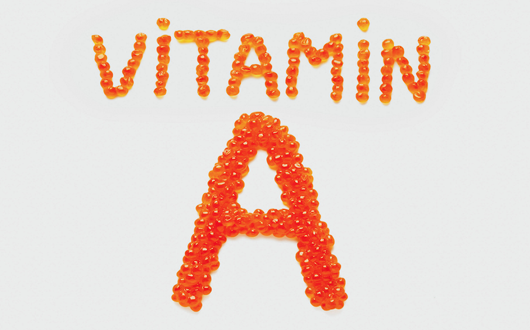
Pumpkin is fall’s signature vegetable, but did you know that it’s good for more than carving and pie? That bright orange flesh of a pumpkin is actually loaded with nutrients such as fiber and key vitamins and minerals that can help keep your body running in top form. With over 200 percent of your daily need of vitamin A; 20% of your daily need for vitamin C; 10% of vitamin E, riboflavin, potassium, copper, manganese; as well as 5% of B6, foliate, iron, and phosphorus, there’s no denying that pumpkin is a superfood.
Now we know that canned pumpkin flies off the shelves during the fall months, but you should consider grabbing that can of pumpkin throughout the year as well. Find out below how pumpkin can benefit your health, as well as why you should eat it year round!
Health Benefits of Pumpkin
Heart Helper

Pumpkin is good for the heart! The fiber, potassium and vitamin C that is found in pumpkin all help to support heart health. In fact, consuming enough potassium for your body is almost as important to heart health as decreasing your sodium intake. A diet rich in potassium helps with the treatment of hypertension (high blood pressure) as well as a reduced risk of stroke, and the protection against the loss of muscle mass.
Weight Loss Aid

Pumpkin is chock full of fiber, which helps to slow down the digestion process. This means that you will feel fuller longer, helping you to ward off cravings and snack binges. A study performed in 2009 found that people who ate a whole apple (apple skin contains a high amount of fiber) before lunch consumed fewer calories during that meal than people who just ate applesauce.
In fact, with seven grams of fiber per cup, pumpkin contains more fiber than two slices of whole grain bread. Pumpkin may be filling, but it also only has 50 calories per serving. With canned pumpkin being almost 90 percent water, it also helps to keep you hydrated, another factor in warding off cravings and overeating!
Better Vision

Pumpkin’s gorgeous orange color comes from beta-carotene, an antioxidant that is converted into vitamin A in the body. Vitamin A is essential for eye health and helps the retina to process light. Just one cup of canned pumpkin contains over 200 percent of the daily recommended amount of vitamin A, making it a vital nutrient for eye health. Pumpkin also contains two helpful antioxidants, lutein and zeaxanthin, which are thought to help prevent cataracts.
Immunity

The vitamin A pumpkin provides does more than just boost your eye heath. Vitamin A also helps your body to fight infections such as viruses and infectious diseases. Pumpkin also contains almost 20 percent of the daily recommended amount of vitamin C, which may help you to recover from those nasty winter colds quicker.
Better Skin

Thanks to beta-carotene, eating pumpkin can keep you looking younger by protecting you from the sun’s UV rays (the rays known to cause wrinkles!). However, pumpkin is a skin aid not just internally, but externally as well. Canned pumpkin (not canned pumpkin pie mix) makes a great, all-natural face mask that exfoliates and soothes the skin.
Try this soothing pumpkin mask: Mix 1/4 cup of canned pumpkin, one egg, and a tablespoon of honey together. Apply the mixture to your face, wait 20 minutes, then wash it off with warm water.
Lower Cancer Risk

Perhaps the most important benefit to pumpkin is its cancer fighting ability. Research shows that people who eat a diet rich in beta-carotene may have a lower risk for some types of cancer, including both prostate and lung cancer. Both vitamin C and vitamin A are potent antioxidants, acting as a shield for your cells by protecting them against free radicals that may lead to cancer.
Other fall superfoods that boast a high amount of beta-carotene? Sweet potatoes and butternut squash.
Incorporating Pumpkin Into Your Diet
Pumpkin is extremely nutrient dense, which means it is chock full of vitamins and minerals but low on calories. This makes it a great addition to meals and dishes. With its relatively subtle flavor, pumpkin can easily be added into dishes without being noticed.
Just beware: When grabbing that can of pumpkin be sure not to accidently grab the canned pumpkin pie mix, which is typically right next to the canned pumpkin. Canned pumpkin pie mix has added sugars and syrups, while canned pumpkin should have one ingredient: pumpkin!
Don’t Forget The Seeds!
If you are anything like countless other pumpkin carvers, you scrape out as much of those fleshy pumpkin innards as possible and dump them into the trash – along with the pumpkin seeds. What if I told you that you were throwing away nutrition gold? That’s right, pumpkin seeds are just as nutritious as the pumpkin flesh! Packed with heart healthy magnesium, pumpkin seeds are also rich in those vital heart healthy omega-3 fatty acids. These little nutrition powerhouses also contain quite a bit of protein and fiber, with almost 12 grams of each in just one cup of roasted pumpkin seeds.
Tips:
- Buy canned pumpkin throughout the year to save money, but when pumpkins are in season, try making your own canned pumpkin to get the freshest, most nutritious pumpkin flesh.
- When baking, use canned pumpkin to replace butter or oil. It will bring down the fat content of the dish!
- Don’t throw away those pumpkin seeds! Rinse them off, then toss them into the oven to roast for a tasty yet nutritious snack.
- Eat it throughout the year: Stir two tablespoons of canned pumpkin into plain greek yogurt along with honey and cinnamon for a fall-like treat.
Enjoyed 6 Amazing Benefits of Pumpkin For Skin, Weight Loss, Vision? Share it with your friends so they too can follow the Superfoodsliving journey.
Share on Pinterest
